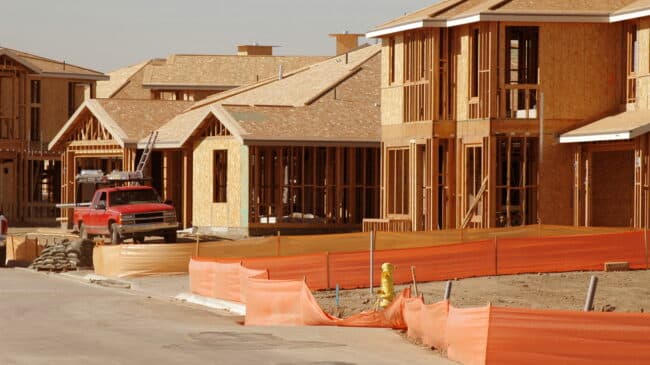High housing costs continue to place economic pressure on American households. In the third quarter of 2022, the median home sales price was $454,900, up from $411,200 in the same quarter of 2021 and a nearly 43% increase from $318,400 in the third quarter of 2019 before prices skyrocketed during the pandemic. Rent prices have also risen dramatically over recent years. A persistent shortage of housing units is partially responsible for the increase in housing costs. Addressing burdensome land-use regulations could help alleviate the growing housing shortage.
The housing shortage is not new. Even before the supply chain and labor disruptions resulting from the COVID-19 pandemic, the Federal Home Loan Mortgage Corporation (Freddie Mac) estimated a nationwide shortage of 2.5 million housing units.
In the wake of the 2008 financial crisis and recession, many homebuilders went out of business or scaled back significantly. The Census Bureau collects data on the number of new single-family and multi-family unit construction projects started each month. Beginning in 2006, the number of new housing starts fell precipitously before slowly increasing throughout the 2010s. New multi-family starts quickly recovered, while single-family starts have remained well below pre-recession levels.

The COVID-19 pandemic contributed to cost increases in building materials and challenges in hiring qualified labor. By the fourth quarter of 2020, Freddie Mac’s housing shortage estimate grew to 3.8 million units across the country.
In Oct. 2021, a record-breaking 76% of homebuilders reported labor shortages. Between May 2020 and May 2021, the price of lumber soared by nearly 120%. In July 2022, the National Association of Home Builders (NAHB) estimated that inflated lumber costs increased the price of an average single-family home by $14,345. Monthly rents for newly constructed apartment units were estimated to be $51 higher than before the pandemic began.
Supply chain problems now appear to be easing, but the effects of COVID-19 will continue to be felt in the homebuilding industry. New housing starts declined throughout most of 2022, and industry experts are increasingly concerned about the near future of the housing market. The Federal Reserve’s increase of interest rates, intended to curb inflation, also adds to mortgage costs. NAHB’s homebuilder sentiment index asking “respondents to rate market conditions for the sale of new homes” declined for the twelfth consecutive month in Dec. 2022.
In addition to recent materials and labor challenges, homebuilders must also navigate a tangled web of land-use regulations, fees, and permitting processes. Even for experienced builders who know the process, permitting delays and other bureaucratic hurdles introduce uncertainty and add to the construction cost. A 2021 estimate from the National Association of Home Builders claims regulatory compliance costs can add nearly $94,000 to the price of an average home. High compliance costs may also incentivize builders to prioritize building homes for the relatively high-margin luxury market. The average size of newly constructed homes has been rising steadily since the 1980s, and starter homes under 1,400 square feet are becoming less common.
While the disruptive effects of the COVID-19 pandemic are temporary, excessive land-use regulations have many longer-term implications for housing supply. Before the pandemic, research in the Handbook of Regional and Urban Economics by economists Joseph Gyourko and Raven Molloy found that home prices regularly outpaced construction costs between 1980 and 2013. Economists generally agree that regulation is responsible for the observed divergence between home prices and construction costs.
Effectively, land-use regulations limit the supply of developable land or restrict the amount of housing that can be built on a particular area of land. Supply constraints, not building costs, have driven the increase in housing prices over recent decades. In many cases, local regulations effectively outlaw higher-density housing options that may be necessary to meet the demand for housing, particularly in urban areas. In the absence of housing policy and land-use reforms, homebuilders may be unable to overcome the growing shortage of housing units.
Local governments could help alleviate the housing shortage by reducing regulatory uncertainty and adopting more permissive zoning practices. The specific needs of each jurisdiction will vary. Particularly in high-demand urban areas, zoning changes may be required to allow for additional multi-family or mixed-use development. Higher-density development may also be enabled by reducing minimum lot sizes, reducing or eliminating minimum parking requirements, allowing accessory dwelling units, or increasing building height limits.
The nationwide housing shortage continues to burden Americans with higher housing costs. The COVID-19 pandemic exacerbated the shortage, but the much longer-term impacts of excessive regulation have contributed to rising housing costs for several decades. Even as pandemic-related disruptions subside, local governments must act to reduce the restrictions, compliance costs, and uncertainty introduced by burdensome land-use regulations.

